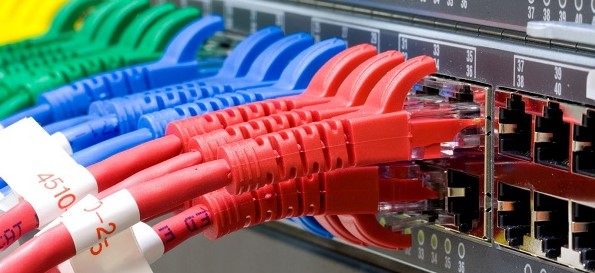445 Broad Hollow Rd. Suite: 25 - Melville NY 11747
- Support X7 Cloud
- Network Configuration
Network Configuration

How We Can Deploy and Organize Your Network Configuration
1. Network Assessment and Planning
Before deploying your network, we begin with a comprehensive assessment to understand your business needs, existing infrastructure, and future goals. This phase ensures that we design a network that is both efficient and scalable.
Key Steps:
- Site Survey and Evaluation: We conduct a detailed site survey to evaluate the physical location of devices, the number of users, and the physical layout to optimize the placement of networking equipment.
- Network Topology Design: We design a logical and physical network topology based on your business needs. This includes decisions on how devices (servers, routers, switches, wireless access points, etc.) will be connected and how data will flow across the network.
- Bandwidth and Load Estimation: We calculate the bandwidth requirements based on the number of users and data traffic. We ensure that your network can handle current and future needs without bottlenecks.
- Future-Proofing: We plan for scalability to accommodate business growth, ensuring the network can easily expand to handle more devices, users, and data.
2. Selection and Procurement of Network Equipment
Once we have a clear understanding of your needs, we recommend the best network hardware that aligns with your business goals, budget, and performance requirements.
Key Steps:
- Router and Switch Selection: We select routers, switches, and other networking devices based on performance, security features, and scalability. We help choose from reputable vendors like Cisco, Juniper, TP-Link, Ubiquiti, and others.
- Wireless Access Points (WAPs): We evaluate the best wireless solutions, ensuring seamless Wi-Fi coverage for your entire office or building. For larger spaces, we deploy mesh systems or enterprise-grade WAPs to ensure strong, uninterrupted signal.
- Firewall and Security Appliances: We ensure your network is secure by selecting the best firewall and security appliances to protect your business from external threats. We implement proper segmentation for different departments or users if necessary.
- Cabling and Racks: We organize the physical infrastructure, including structured cabling and server racks, to ensure everything is clean, organized, and efficient.
3. Network Configuration and Deployment
With the network hardware selected, it’s time to configure and deploy the devices according to the network design. This phase involves setting up devices, configuring IP addresses, and ensuring that security protocols are implemented.
Key Steps:
- Router and Switch Configuration: We configure routers and switches with appropriate IP addressing, VLANs (Virtual Local Area Networks), and routing protocols (e.g., OSPF, EIGRP, BGP) to ensure optimal data flow and network segmentation.
- Subnetting and IP Addressing: We assign IP addresses in an organized manner, using subnets to logically divide the network and optimize performance. This includes private IP addressing for internal networks and public IP addresses for internet-facing devices.
- VLANs and Network Segmentation: We configure VLANs to separate network traffic for different departments or services (e.g., Finance, HR, Sales), improving security and reducing network congestion.
- DHCP Configuration: We configure Dynamic Host Configuration Protocol (DHCP) servers to automatically assign IP addresses to devices on your network, reducing manual configuration and ensuring consistency.
- Wireless Network Setup: We configure Wi-Fi networks, ensuring proper channel selection, security (WPA3), and Quality of Service (QoS) for critical applications like VoIP or video conferencing.
- DNS and DHCP Services: We set up DNS (Domain Name System) and DHCP servers to ensure smooth internal network operations and external resolution of domain names.
4. Network Security Implementation
Securing your network is paramount. We deploy various security measures to protect your infrastructure from internal and external threats, ensuring that only authorized users have access to sensitive data.
Key Steps:
- Firewall Setup: We configure firewalls to control inbound and outbound traffic based on your organization’s security policies. We implement both hardware and software firewalls to block unauthorized access.
- Access Control Lists (ACLs): We configure ACLs on routers and switches to limit access to specific network resources based on IP addresses, protocols, or ports.
- VPN Configuration: We set up Virtual Private Networks (VPNs) to allow remote employees or branch offices to securely connect to your internal network.
- Intrusion Detection and Prevention Systems (IDPS): We implement IDPS to detect and prevent unauthorized access or suspicious activities within the network.
- Security Policies: We help develop and enforce security policies for users, devices, and applications to ensure that your network remains secure.
5. Testing and Optimization
Once the network is configured, we thoroughly test the entire system to ensure that all components are working as expected. We also perform optimization to ensure your network is fast, efficient, and reliable.
Key Steps:
- Connectivity Testing: We test all connections, from wired devices to wireless access points, to ensure that the network is functioning without issues.
- Bandwidth Testing: We measure network bandwidth to ensure there are no bottlenecks and that data is being transmitted efficiently across the network.
- Latency Testing: We check for any latency or delays in the network, particularly for critical applications like VoIP, video conferencing, or real-time services.
- Security Penetration Testing: We conduct vulnerability scans and penetration tests to identify any weaknesses in the network’s security.
- Load Balancing Configuration: If necessary, we set up load balancing to distribute network traffic evenly across devices or servers, ensuring optimal performance during peak usage times.
6. Documentation and Reporting
Once everything is configured and optimized, we create detailed documentation to ensure that you have a clear record of your network architecture, configurations, and settings.
Key Steps:
- Network Diagrams: We provide visual diagrams that detail the network’s physical and logical layout, helping you understand how devices are interconnected.
- IP Address Management: We document your IP addressing scheme, including reserved IP addresses, DHCP ranges, and VLANs.
- Configuration Files: We provide backup configuration files for your routers, switches, firewalls, and other devices, ensuring that you can quickly restore settings if needed.
- Security Policies: We document security policies, such as access controls, firewall rules, and VPN configurations.
7. Ongoing Maintenance and Monitoring
Your network is an evolving system, and ongoing monitoring and maintenance are crucial to ensure it remains secure and efficient over time. We offer comprehensive network monitoring and management services to keep your network running smoothly.
Key Steps:
- 24/7 Monitoring: We set up network monitoring systems that track performance, detect anomalies, and alert you to any issues in real-time.
- Automated Backups: We ensure that network configurations and critical data are regularly backed up to prevent data loss.
- Software and Firmware Updates: We keep all your network devices up to date with the latest software and firmware patches to protect against vulnerabilities and improve performance.
- Troubleshooting and Support: We provide ongoing troubleshooting and support services to address any issues that may arise.
8. Scalability and Future-Proofing
As your business grows, your network will need to evolve to meet increasing demands. We help you future-proof your network infrastructure by ensuring scalability and flexibility.
Key Steps:
- Modular Design: We design networks that can easily be expanded by adding new devices, servers, or services without causing disruptions.
- Cloud Integration: We integrate cloud services to complement your on-premise network, enabling you to scale and manage your infrastructure more efficiently.
- Bandwidth Scaling: We ensure that your network can handle future bandwidth needs by planning for future upgrades in network speed and capacity.
Conclusion
At Support X7 Cloud, we take a systematic, thorough approach to deploy and organize your network configuration. From initial planning and design to ongoing maintenance and support, our team ensures that your network is reliable, secure, and optimized for performance.
Whether you’re setting up a small office network or need an enterprise-level solution, we’re here to guide you every step of the way. Contact us today to learn more about how we can help you create a seamless, efficient, and secure network for your business.
Ready to get started? Let us help you design, deploy, and manage your network with the expertise and care it deserves.
Helping you overcome your technology challenges
Contact
-
-
-
445 Broad Hollow Rd. Suite: 25
Melville NY 11747
© All Copyright 2024 by Support X7 Cloud
